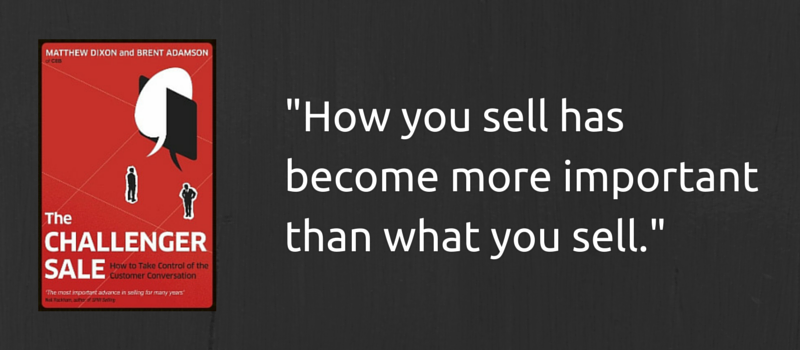
feature
What separates high performing sales people from the rest?
The single biggest incremental opportunity to drive growth isn’t in the products and services you sell, but in the quality of the insight you deliver as part of the sale itself.
One of the largest sales studies ever conducted — as presented in The Challenger Sale — looked at over 6,000 B2B sales people from over 90 companies across different industries to determine the unique traits of high performing sales reps.
They identified five different sales profiles that characterized the way reps naturally interact with a prospect (these are not mutually exclusive):
- The Hard Worker puts his head down, doesn’t give up, and keeps coming back until the deal is done. He takes feedback from clients and prospects very seriously and is always trying to improve.
- The Lone Wolf refuses to be predictable. This rep does his own thing and follows an instinct driven approach to sales. There’s nothing textbook about the way he operates.
- The Relationship Builder is the classic consultative sales person. He prides himself in building relationships with the right people across an organization to increase his chances of winning the deal.
- The Problem Solver has an answer to every question. He’s highly detailed oriented and adds a ton of value in sales conversations.
- The Challenger takes a difference stance altogether. This rep presents buyers with new and engaging ways to solve their problems by challenging their thinking and pushing the status quo.
Among average performers, there was no discernible advantage between one profile or another. Each of the five approaches had roughly the same levels of success.
Among high performers, 40% used the Challenger Approach while only 7% used the Relationship Builder Approach (the worst-performing profile). In complex sales environments, more than 50% of reps used the Challenger Approach.
Turns out, becoming your prospects best friend and buying them lunch isn’t the path to sales success. Instead, you need to push their thinking, disrupt the status quo, and tackle the critical issues facing their business head on.
How to Master the Challenger Approach
A Challenger is really defined by the ability to do three things: teach, tailor, and take control.
- Teach – Solution selling is dead. Buyers are less willing to spend time helping sales people ‘understand their business’ only to be sold some off-the-shelf solution. Instead, sellers need to earn the time they spend having sales conversations by teaching buyers new ways of approaching their most pressing problems.
- Tailor – Challengers know how to craft a sales message that resonates. This boils down to knowing your buyer’s objectives and having the ability to tailor your message to make sure the story you’re telling has an emotional impact.
- Take control – Telling your buyer what to do is a great way to lose a deal. Challengers don’t impose their views on the buyer — they skillfully steer the sales conversation in the right direction by creating constructive tension that motivates buyers to take action.
Further exploration:
- The Challenger Sale: Taking Control of the Customer Conversation
- The Challenger Sale in Less than 10 Minutes
- The Challenger Sale says Building Relationships No Longer Works
- A 5-Minute Summary of The Challenger Sale
- The Challenger Sales Model in 8 Minutes
marketing
Build a Newsletter People Will Actually Read
Last week, we talked about how to build an email newsletter that wins business. But newsletters are only effective at building relationships and authority if people actually open them up and read them.
In this post, Sara Jantsch of Duct Tape Marketing shares 4 best practices to make sure your email doesn’t get ignored like the rest of them.
Read Here > How to Build a Newsletter People Will Actually Read
sales
How to Sell to the Subconscious Mind
Most sales pitches attempt to engage buyers with a serious of logical propositions that, hopefully, will result in a sale. But most sales pitches also fail miserably.
In this podcast interview, Erik Luhrs explores how to connect with buyers at an emotional level by creating messages that speak to the subconscious mind.
Read Here > Sell More, Sell Faster: Sell to the Subconscious Mind
growth
Fixed vs. Growth: The Two Basic Mindsets That Shape Our Lives
Is the difference between success and failure all in your head? Dr. Carol Dweck, a social psychologist at Stanford University, argues that there are two types of people: those with a fixed mindset and those with a growth mindset.
Her 20+ years of research has shown that the mindset you adopt could be the difference between achieving your potential or becoming a chronic under achiever.
Read Here > Fixed vs. Growth: The Two Basic Mindsets That Shape Our Lives